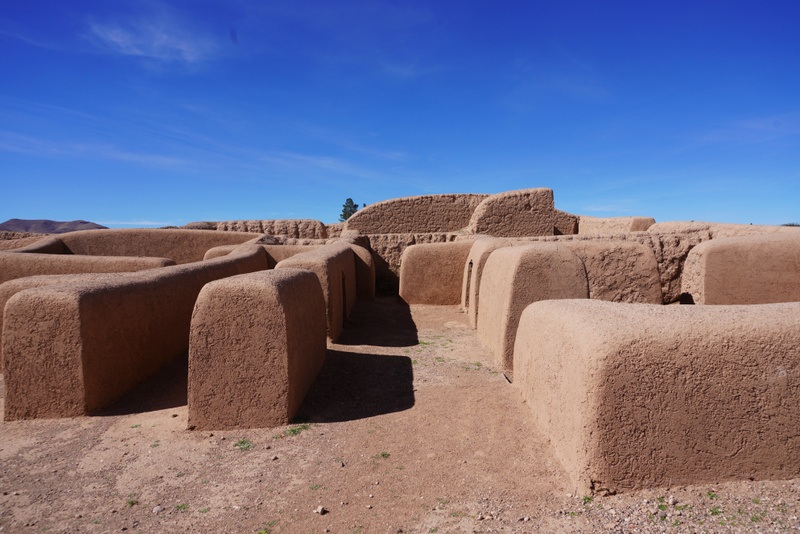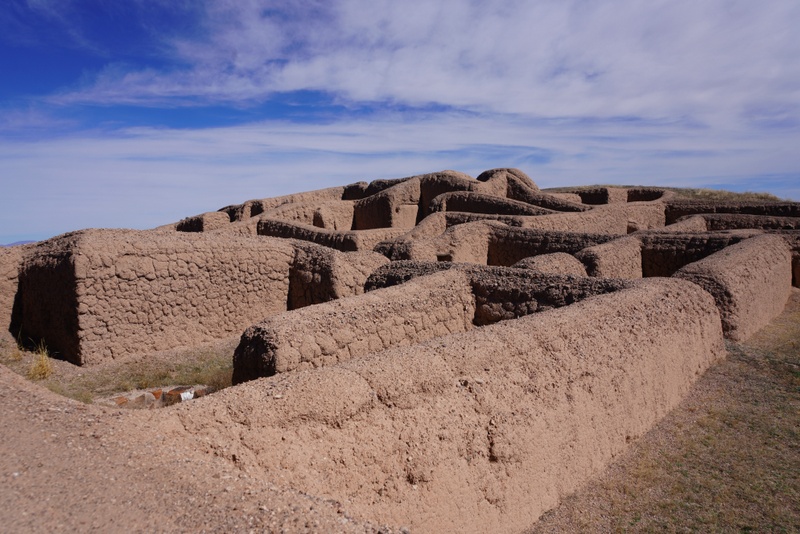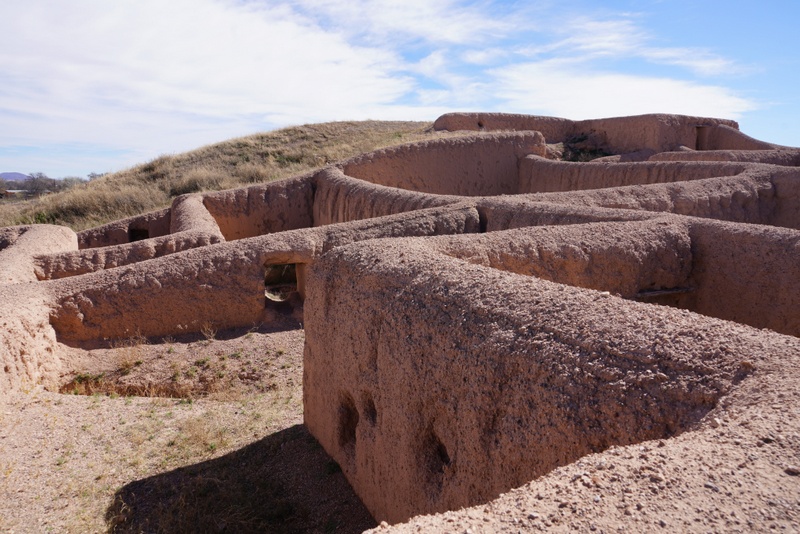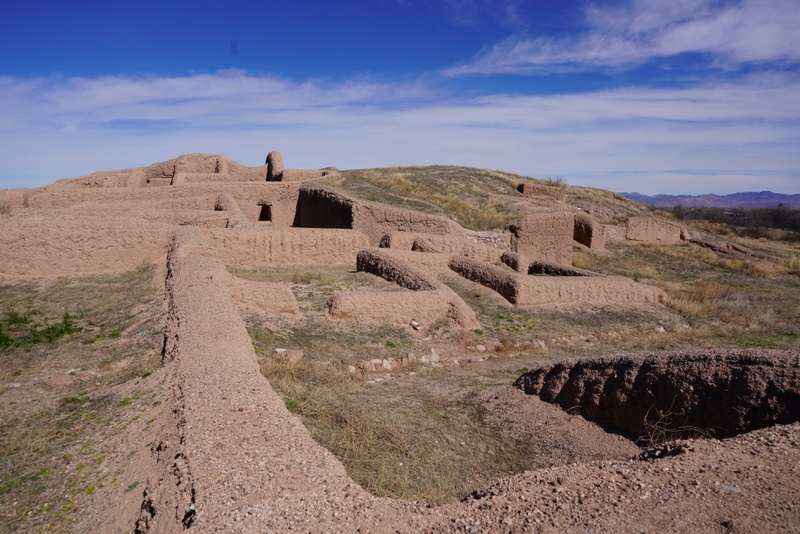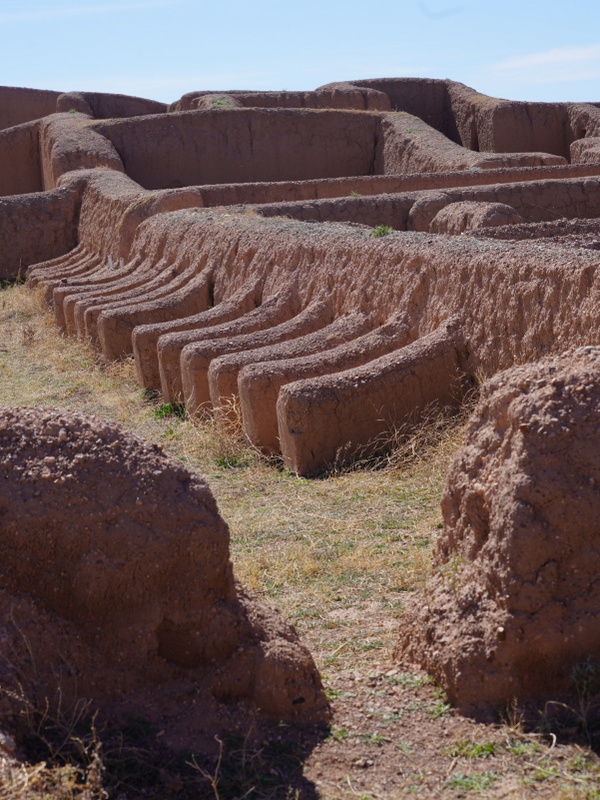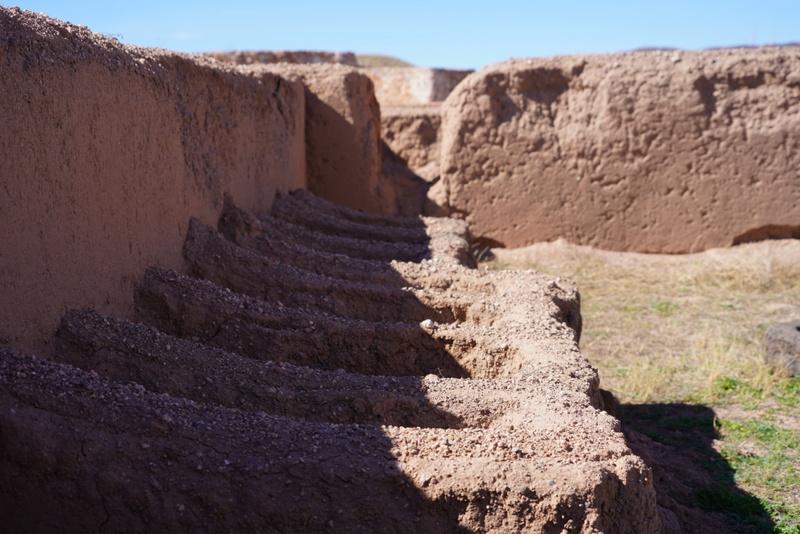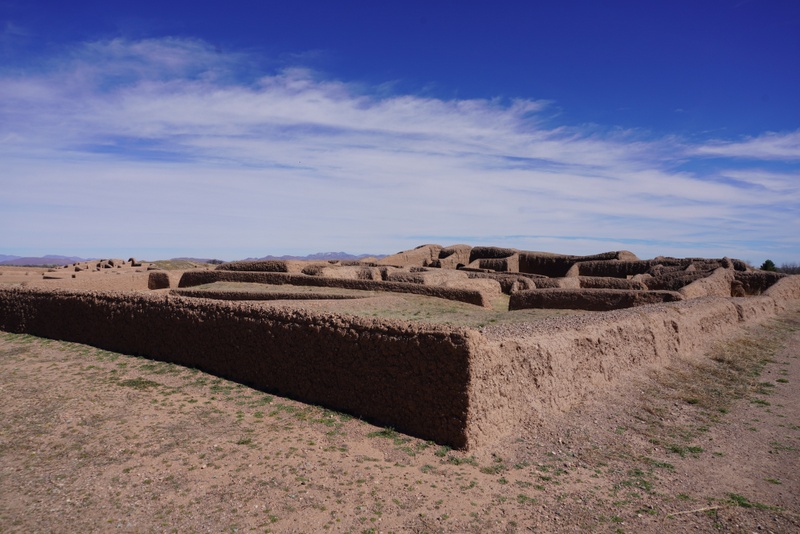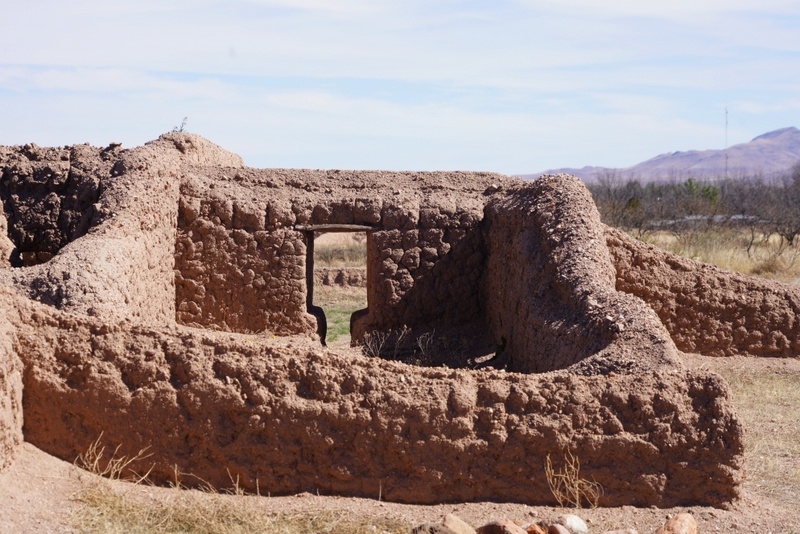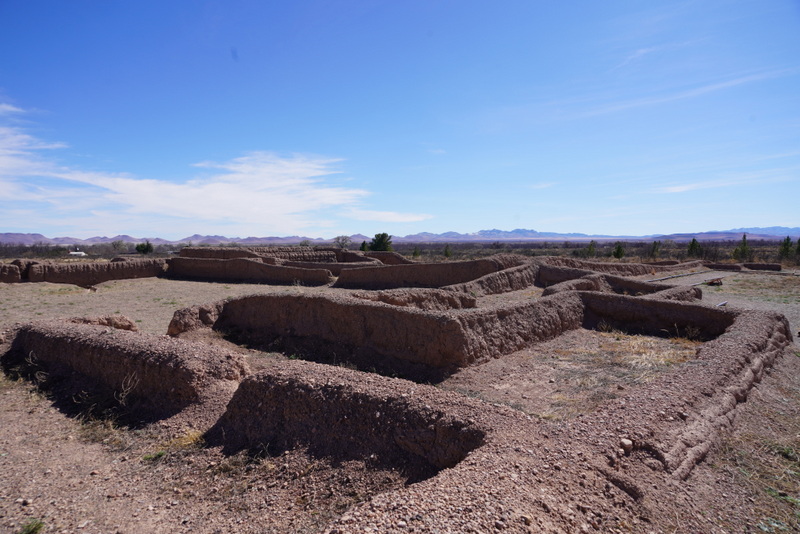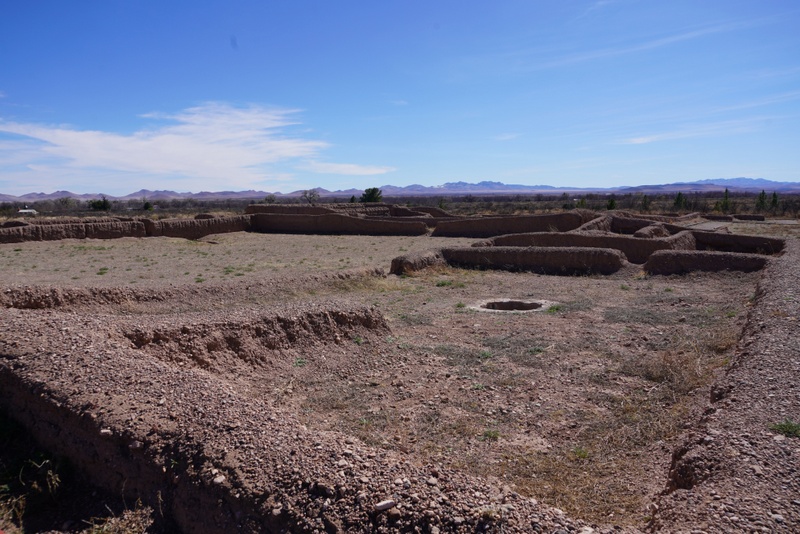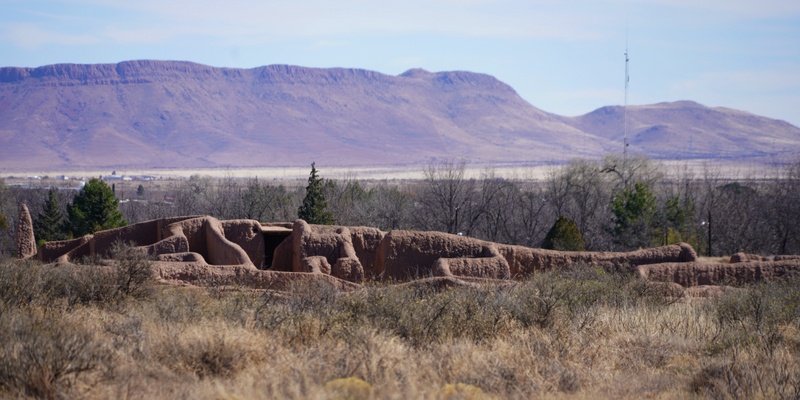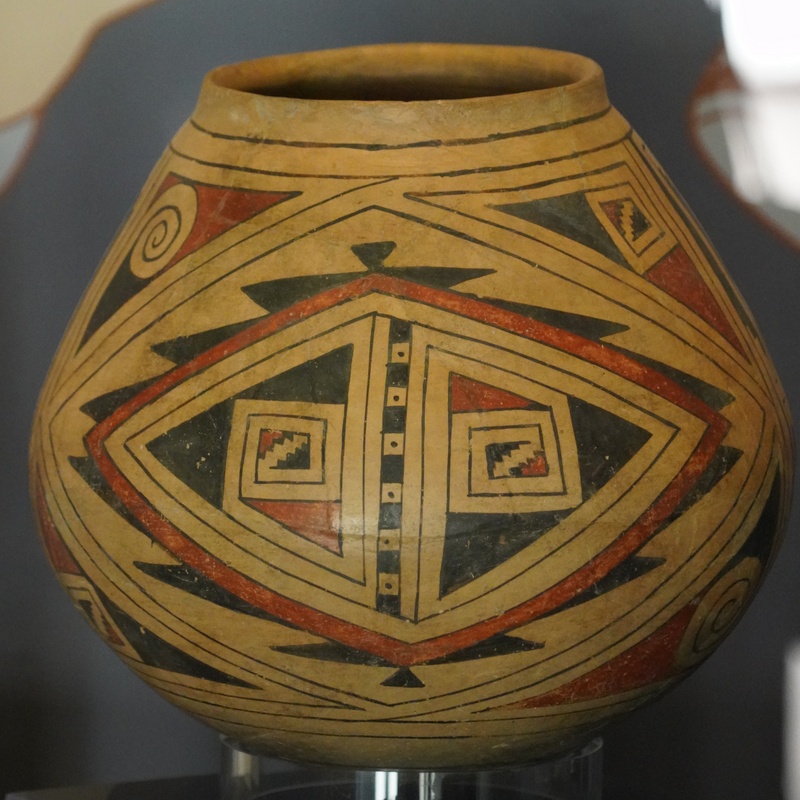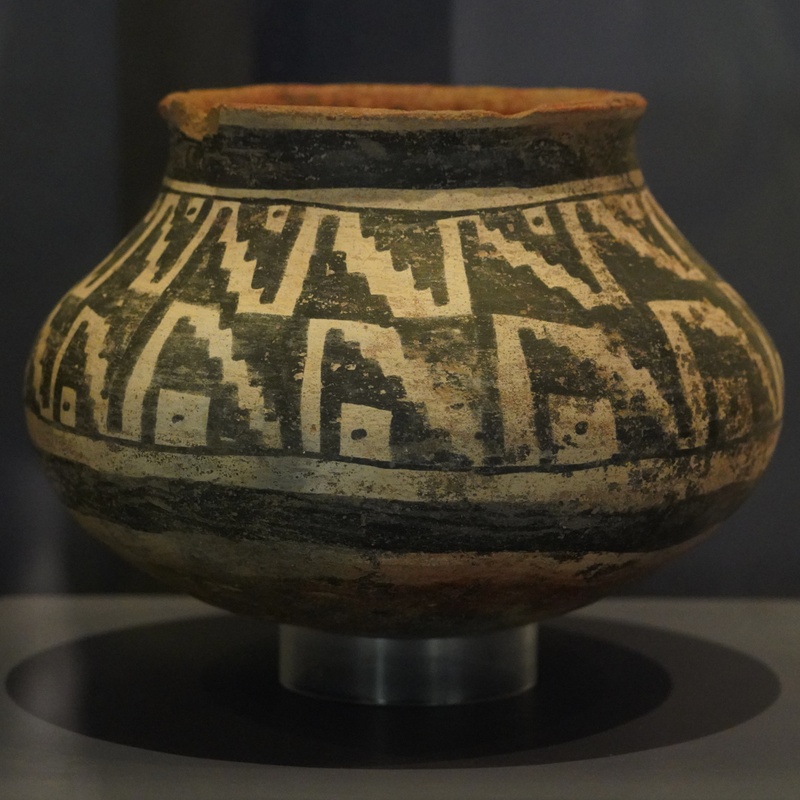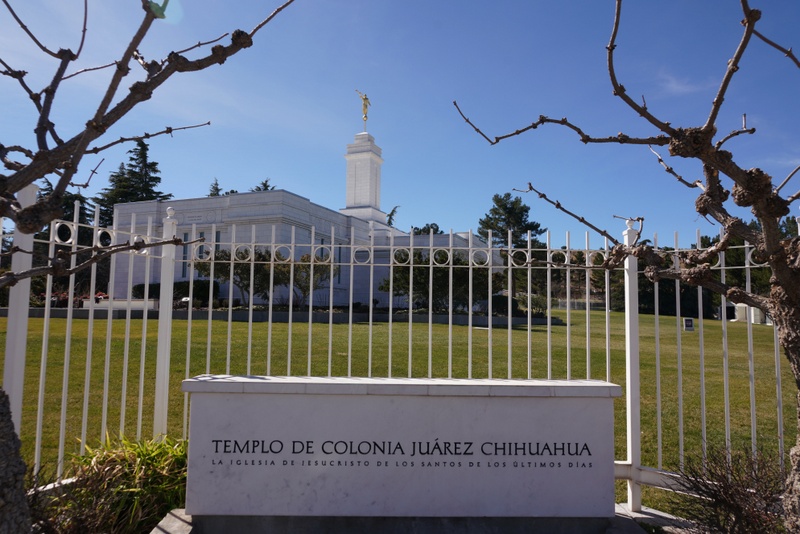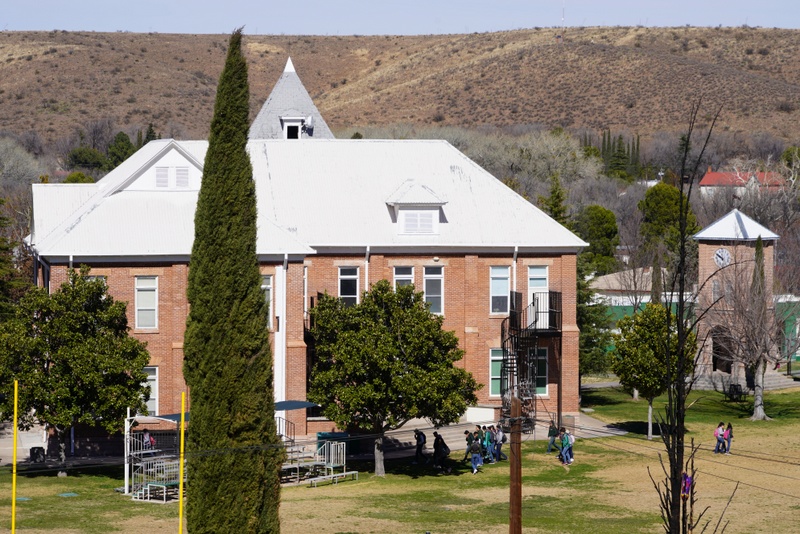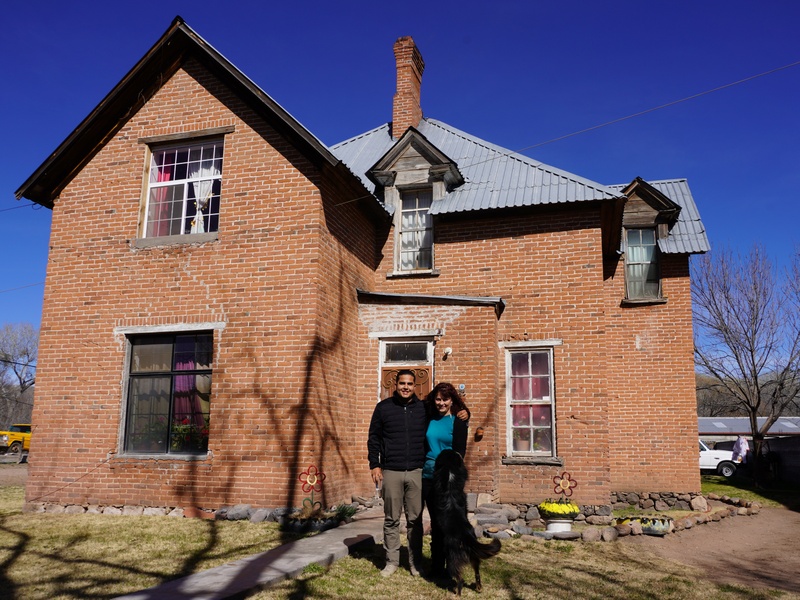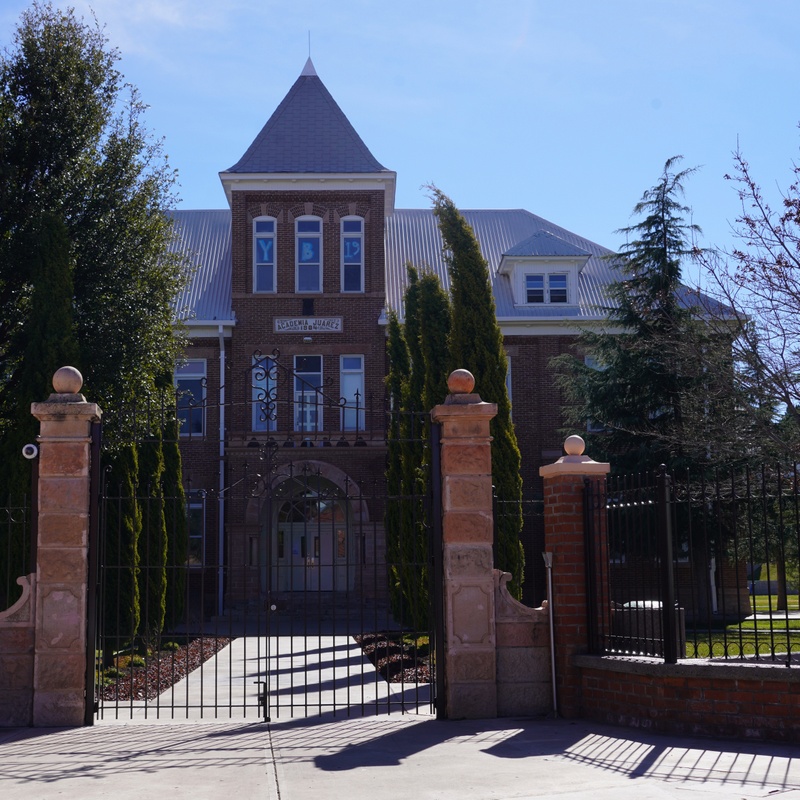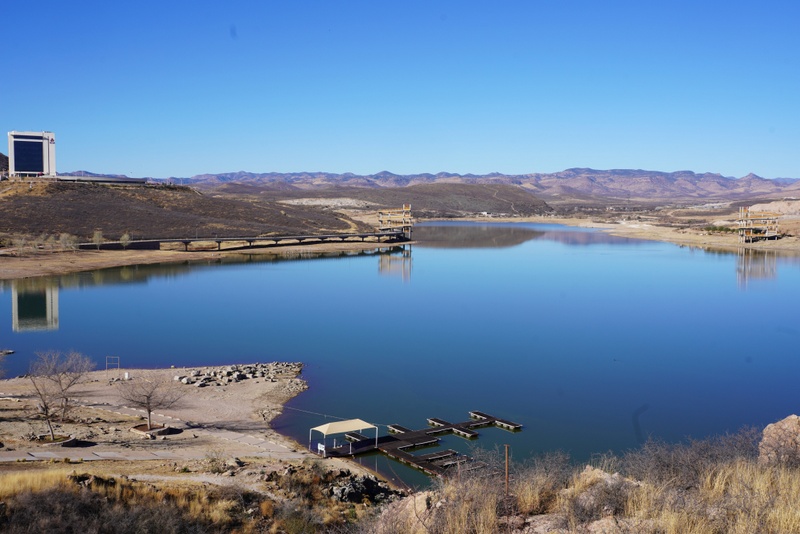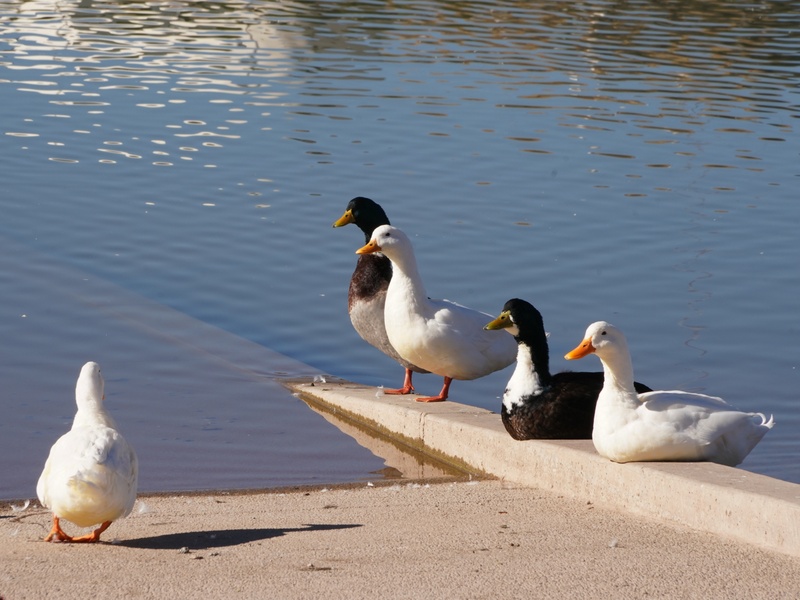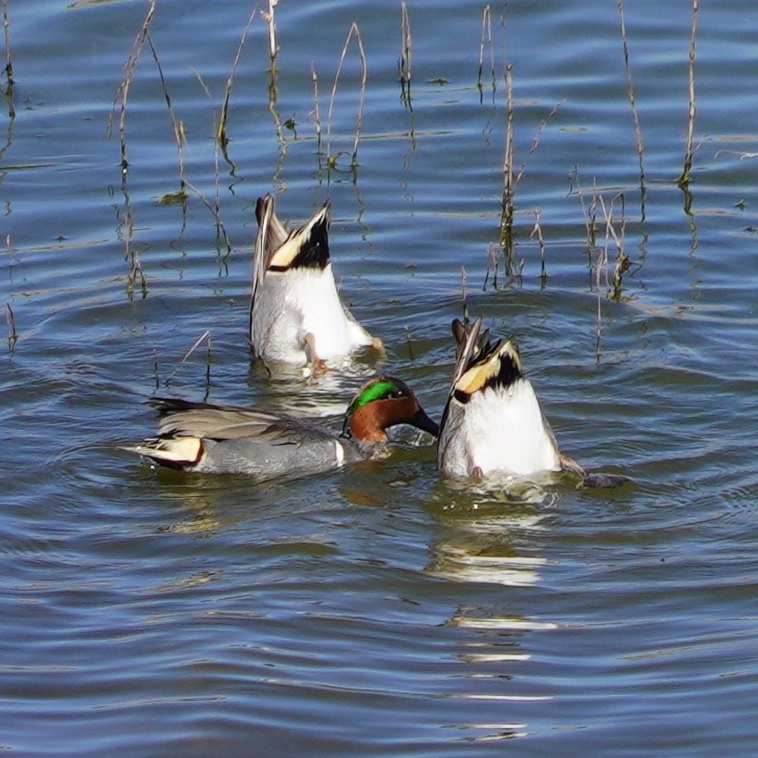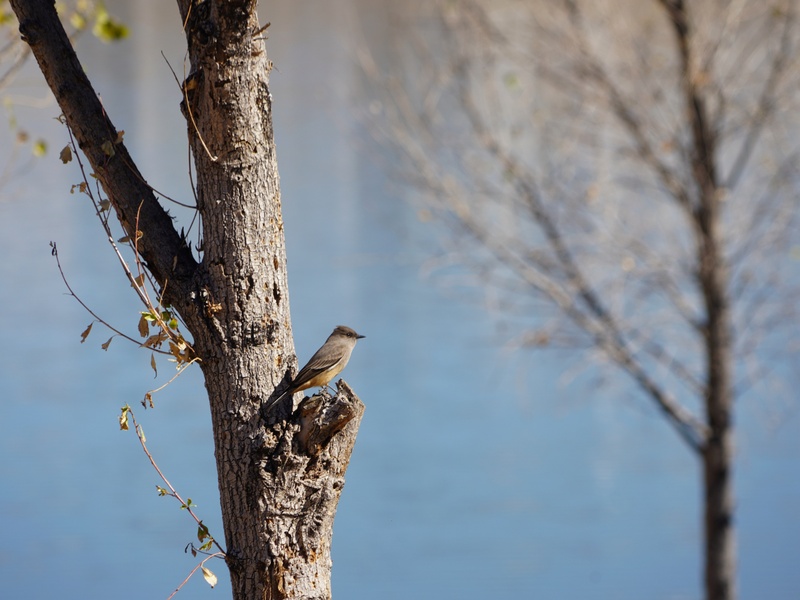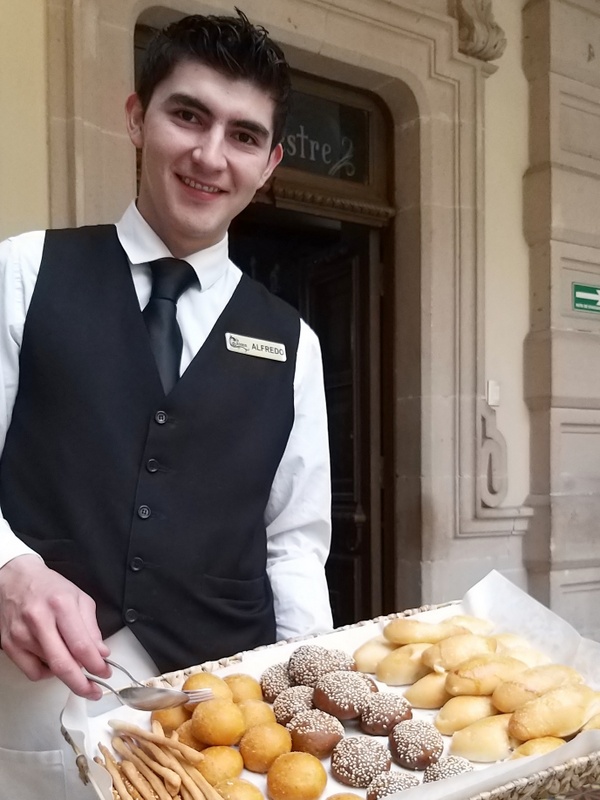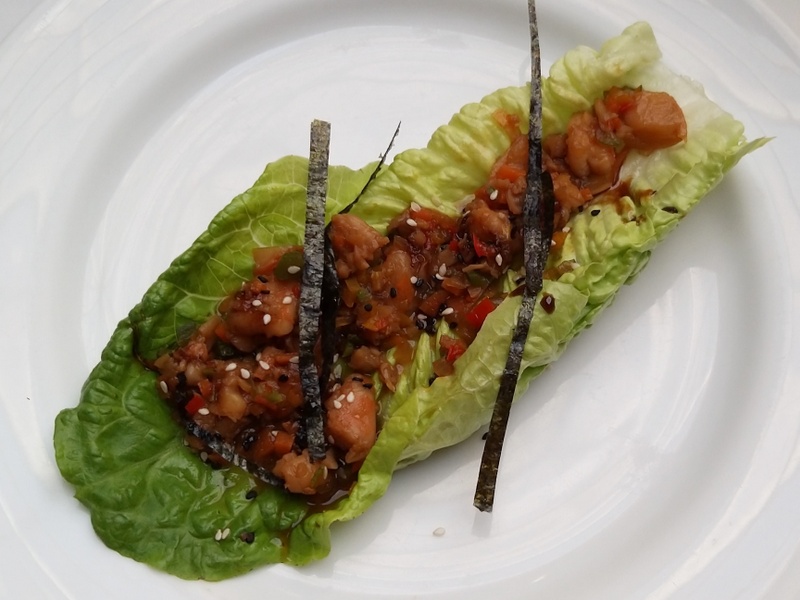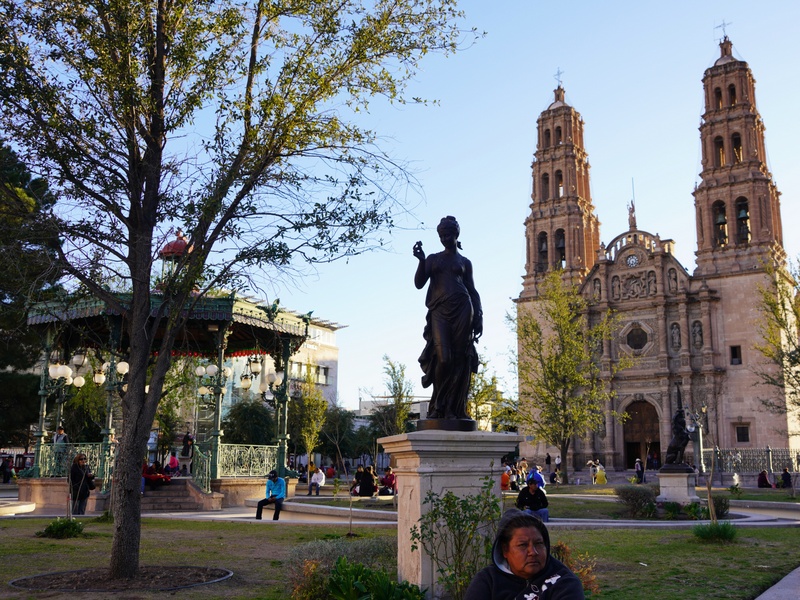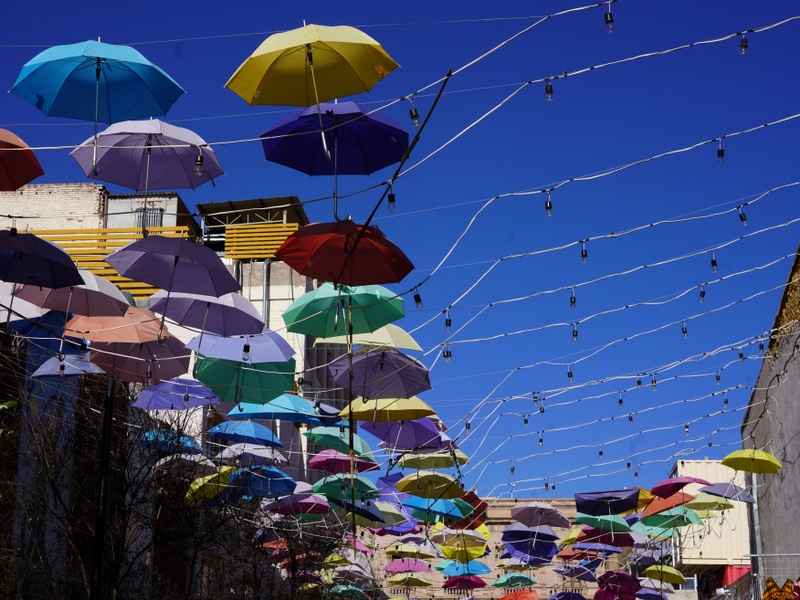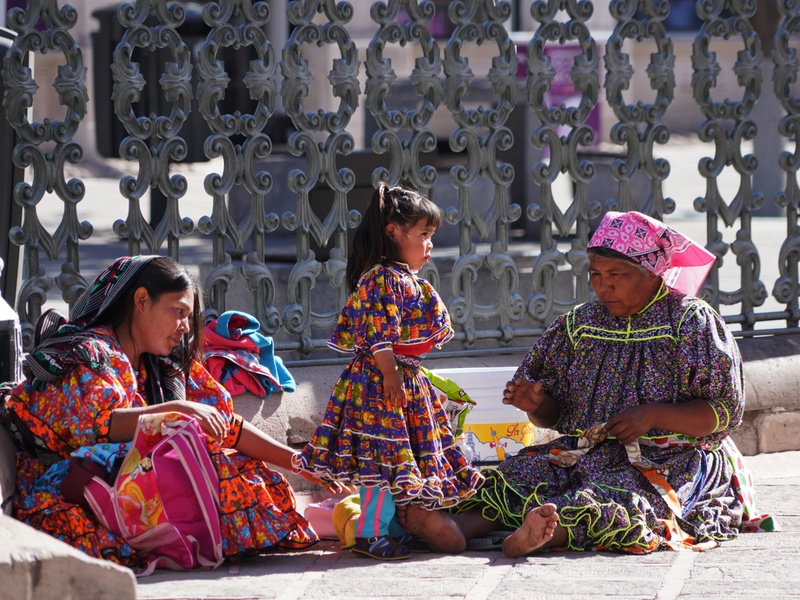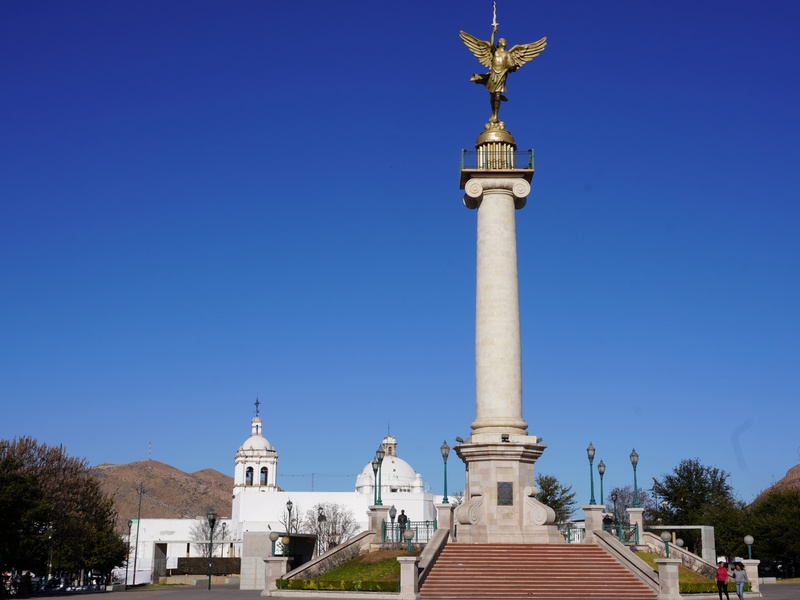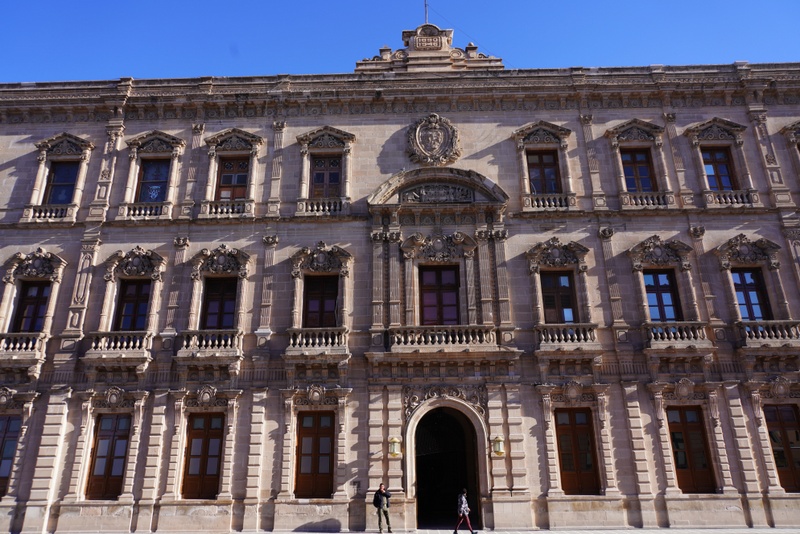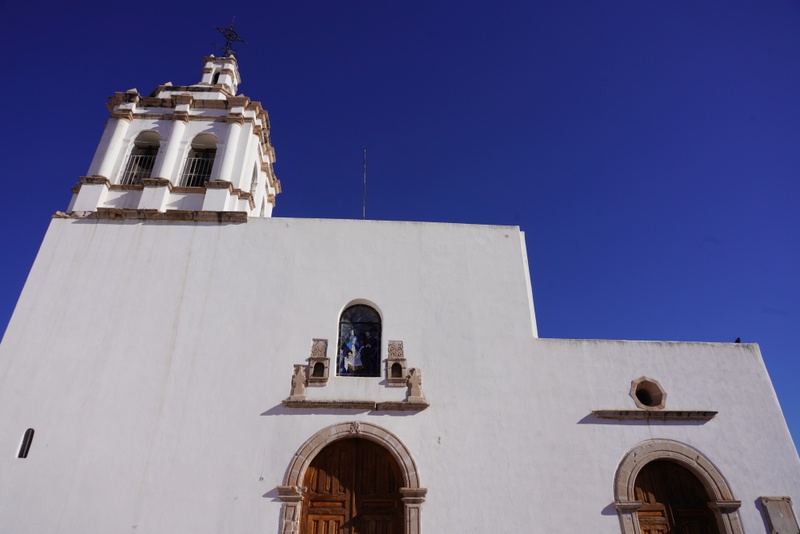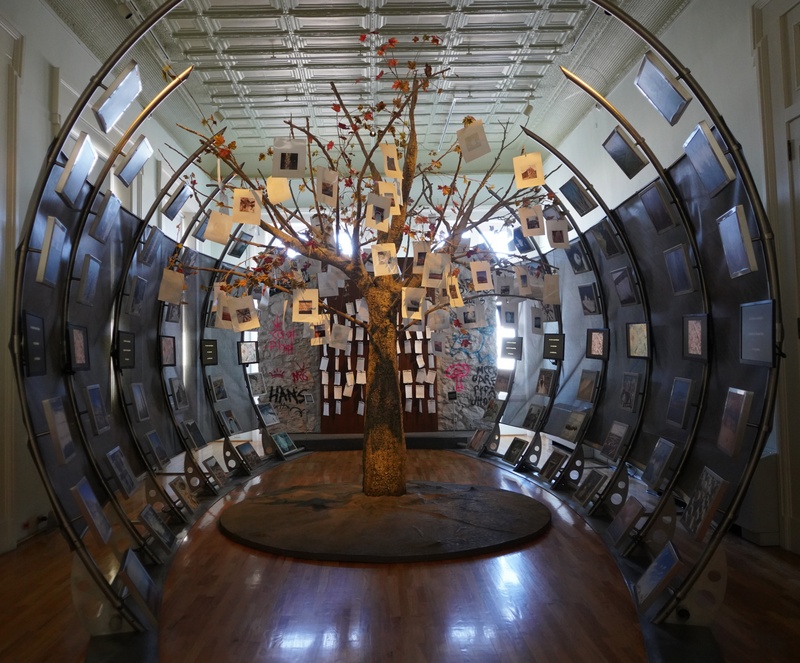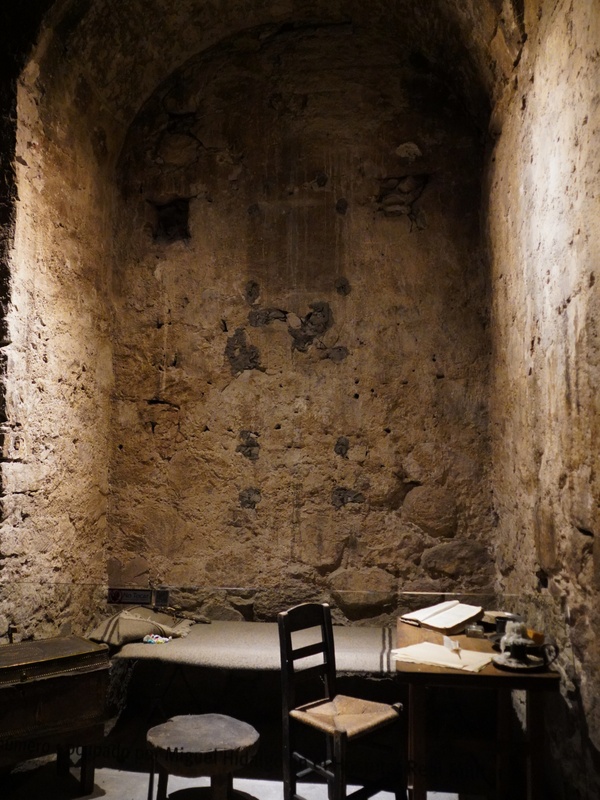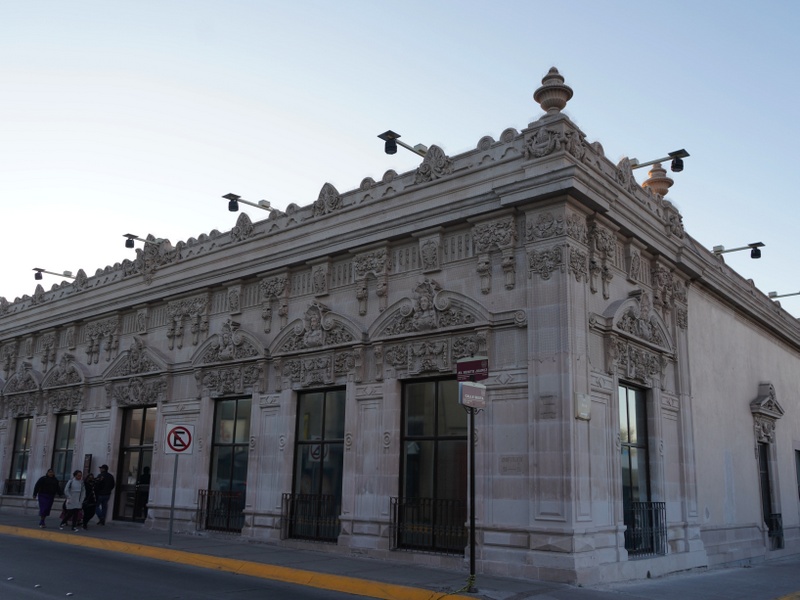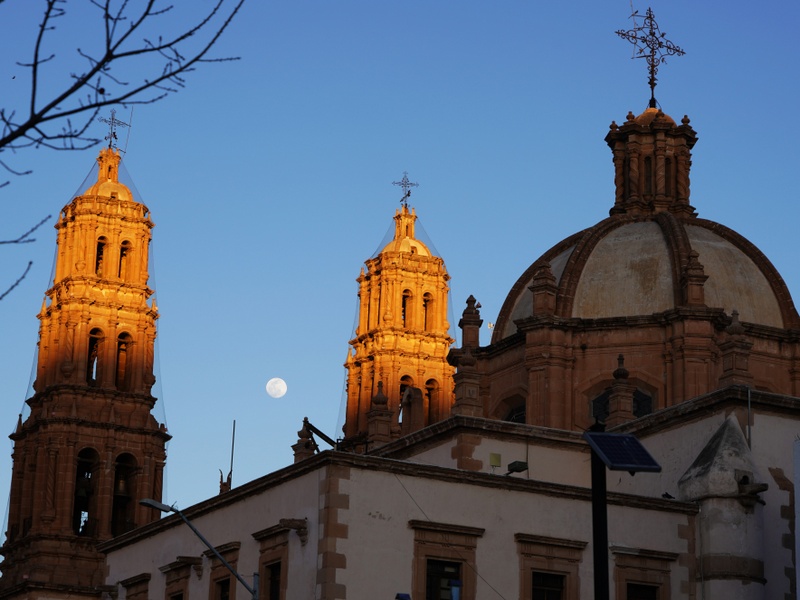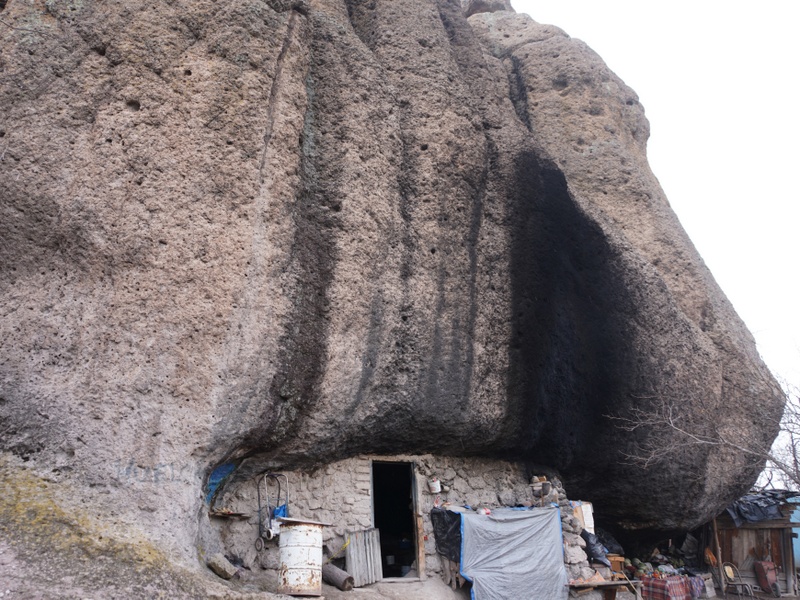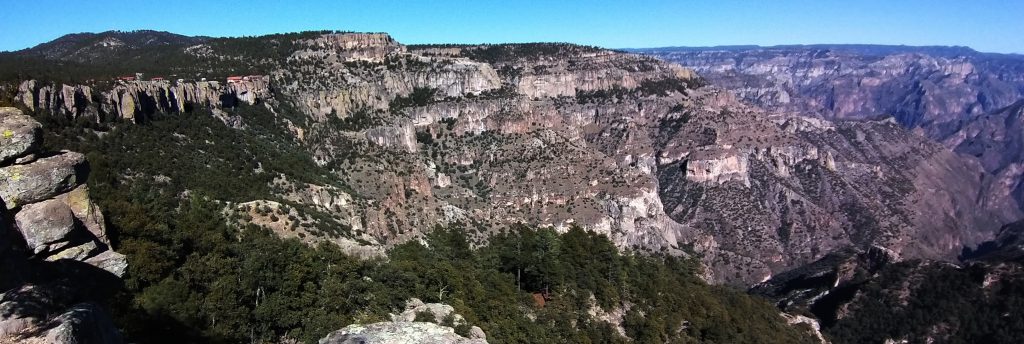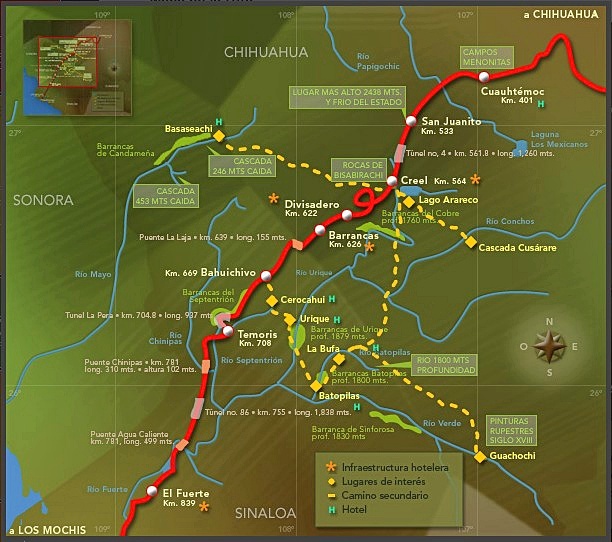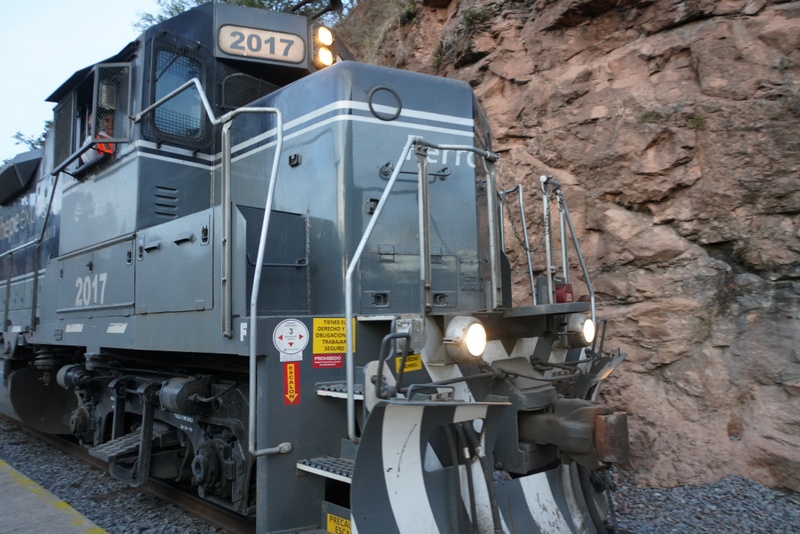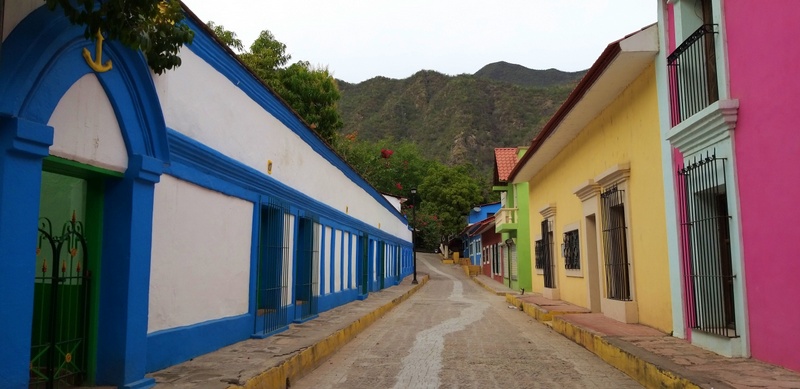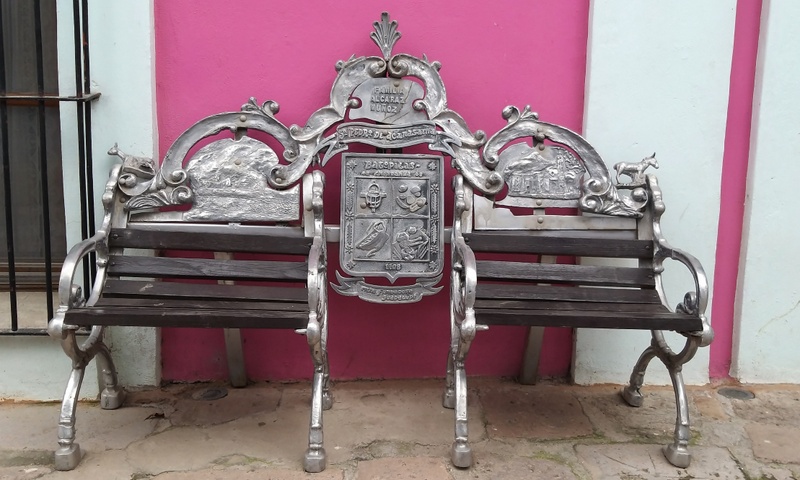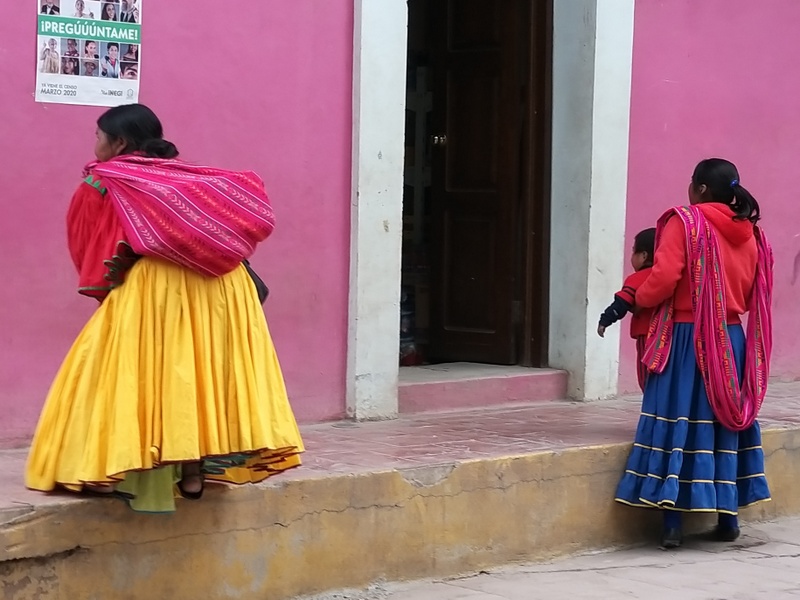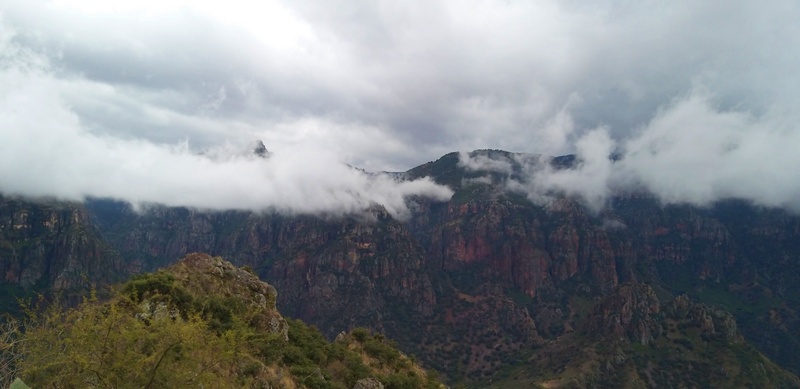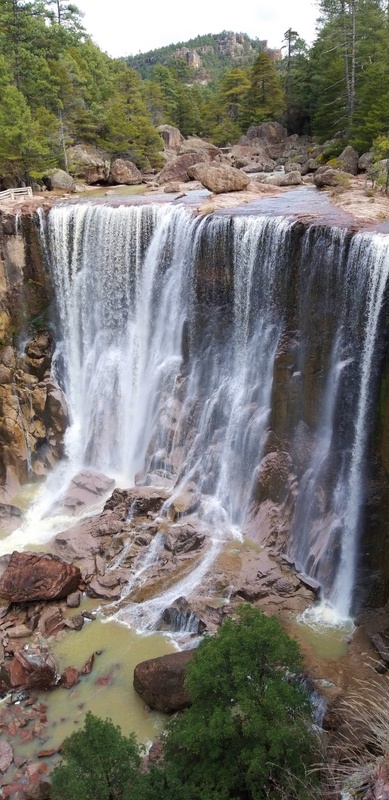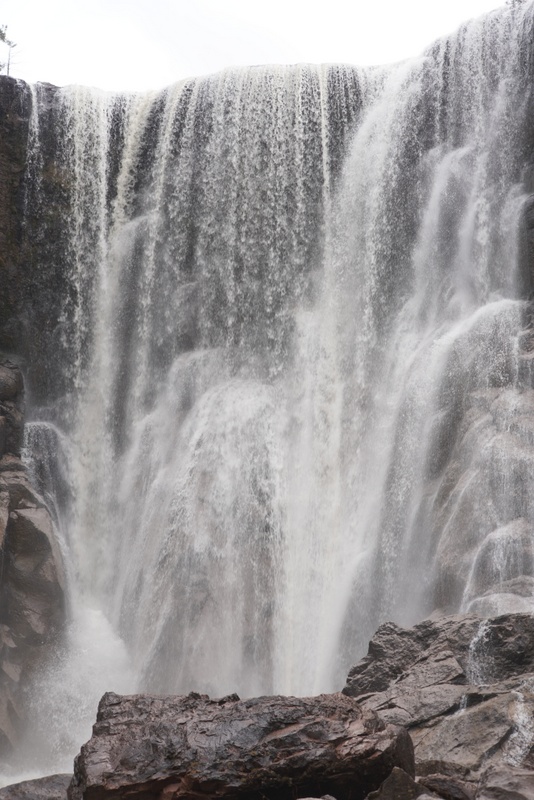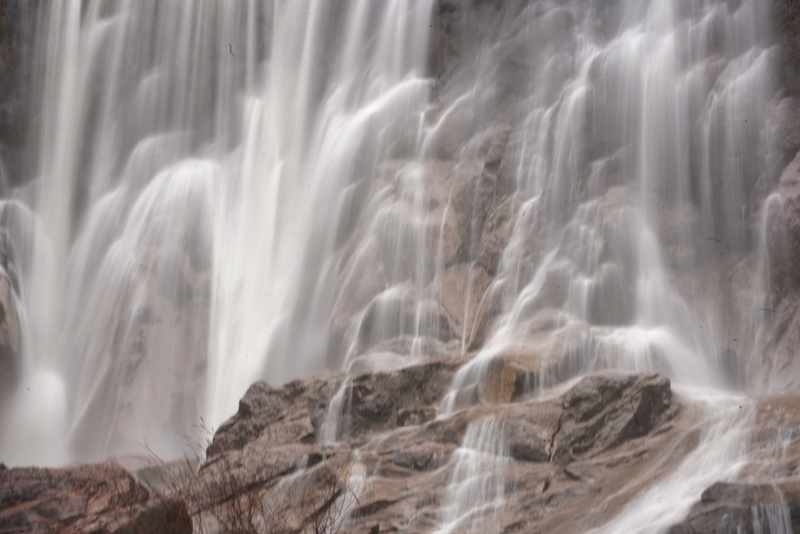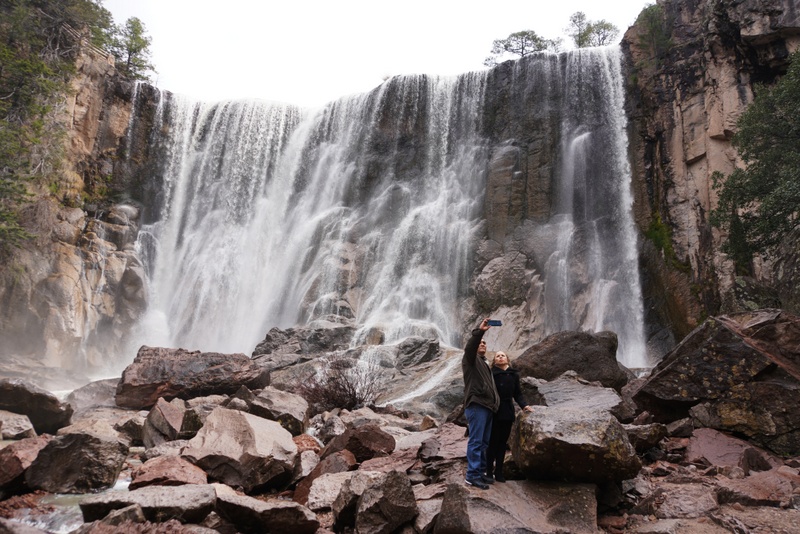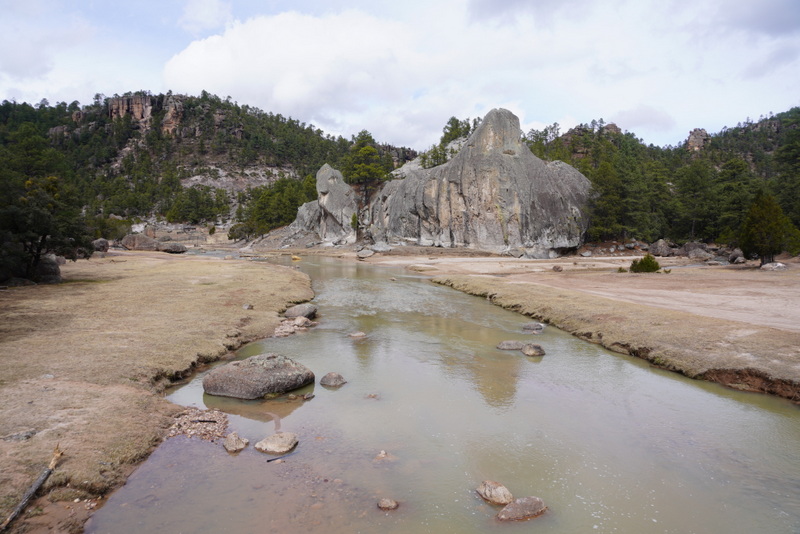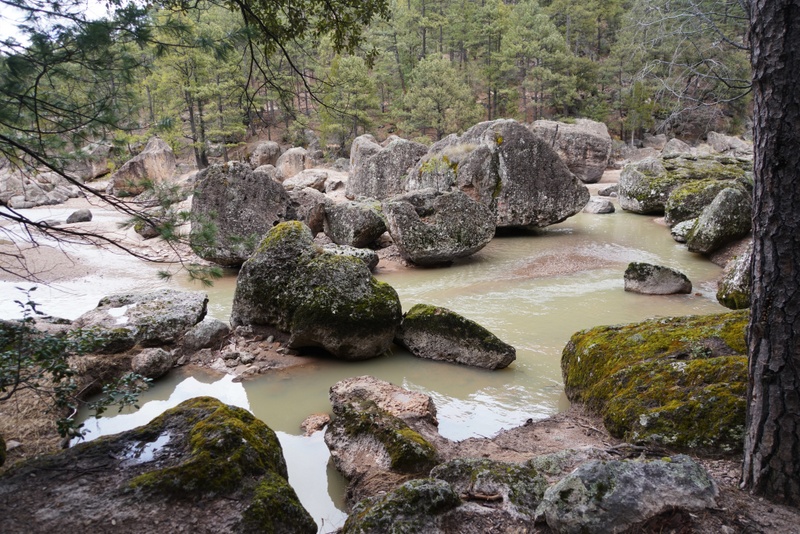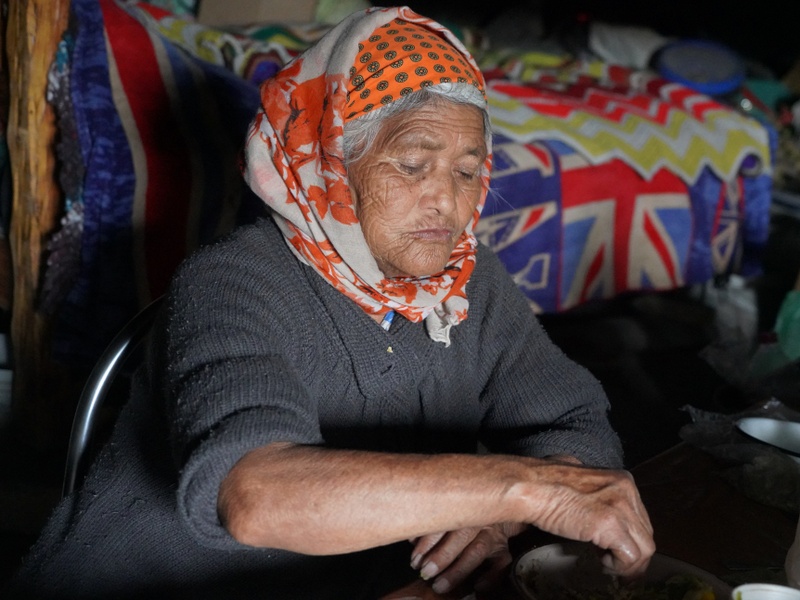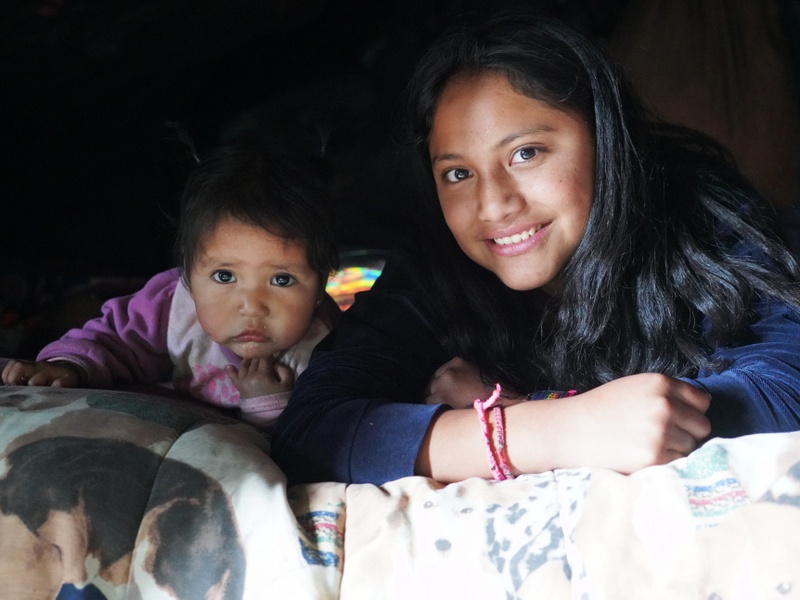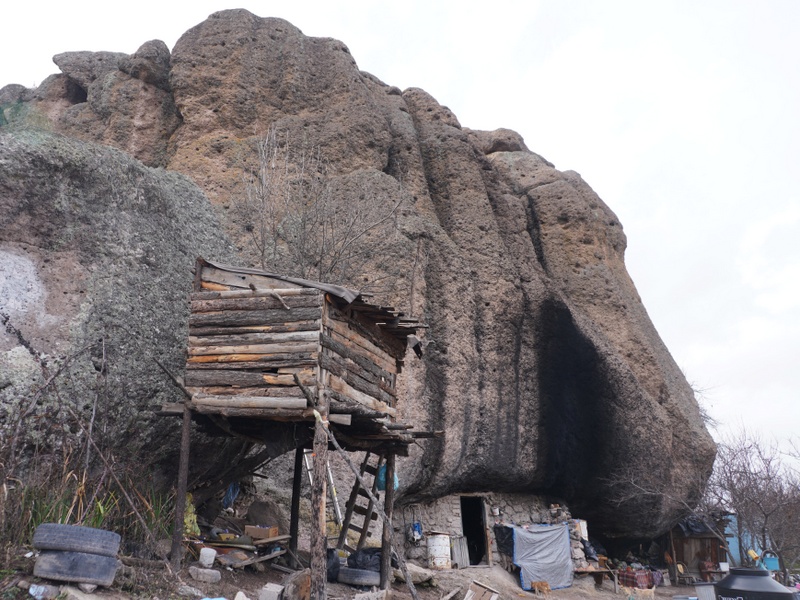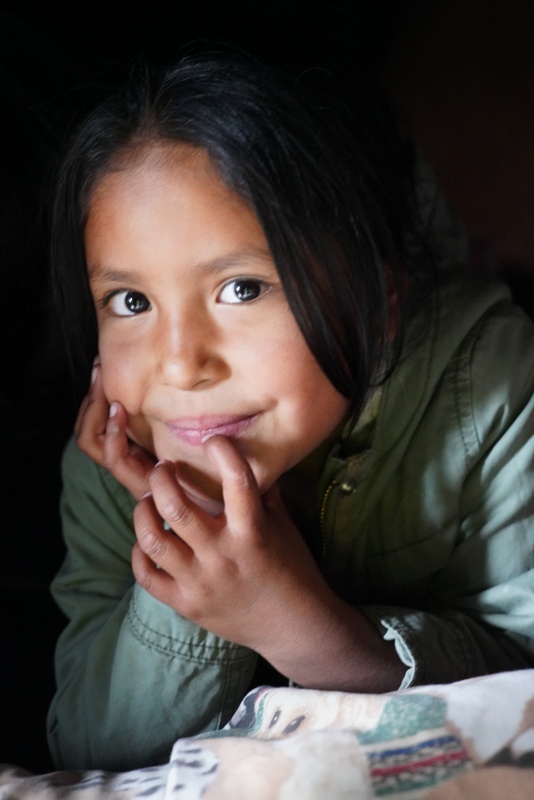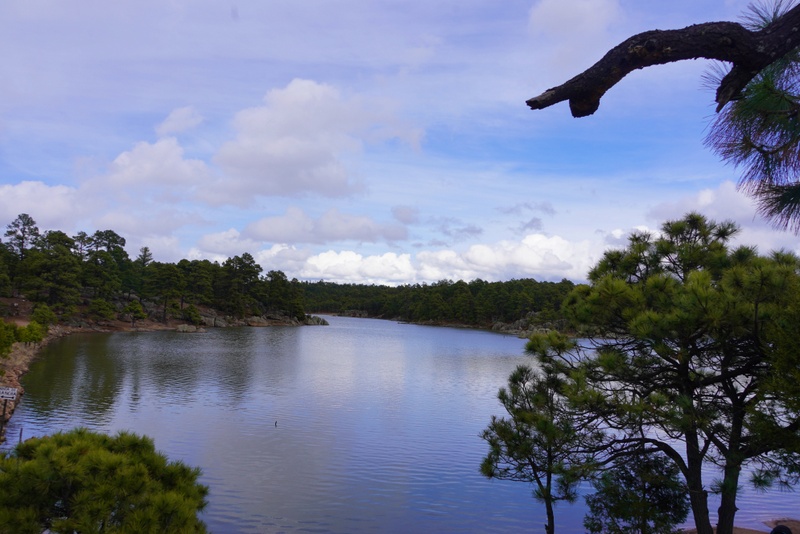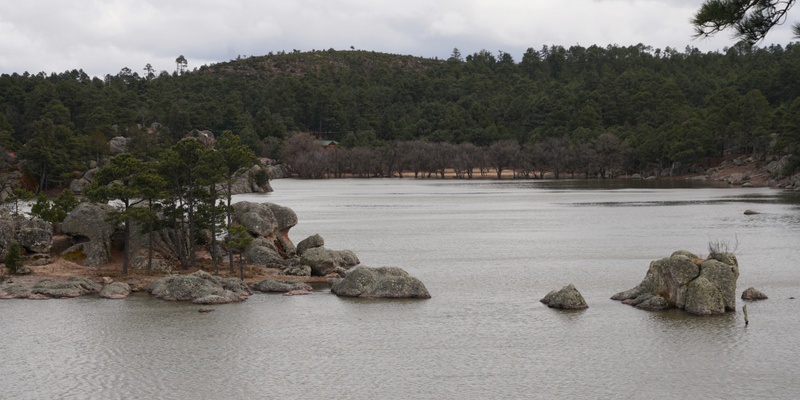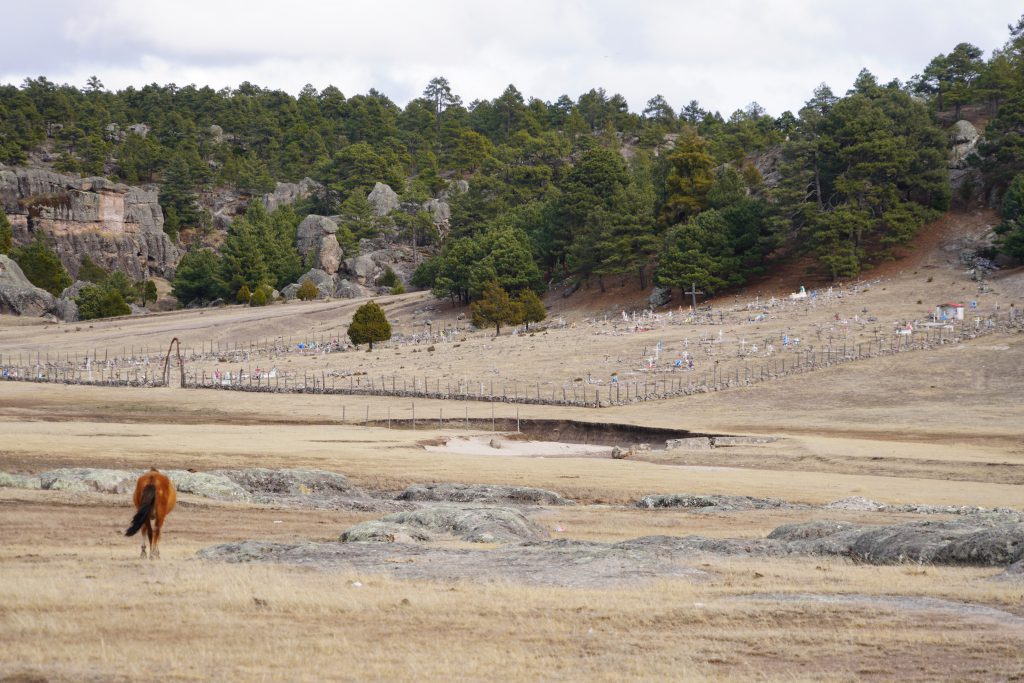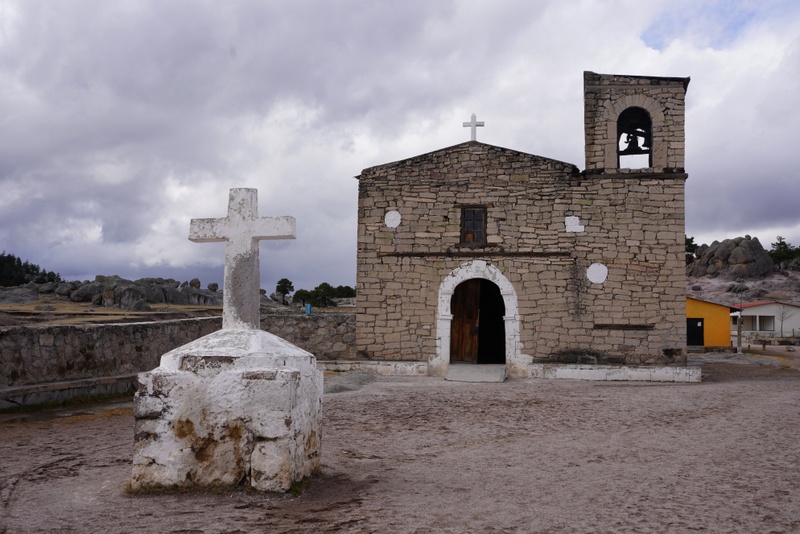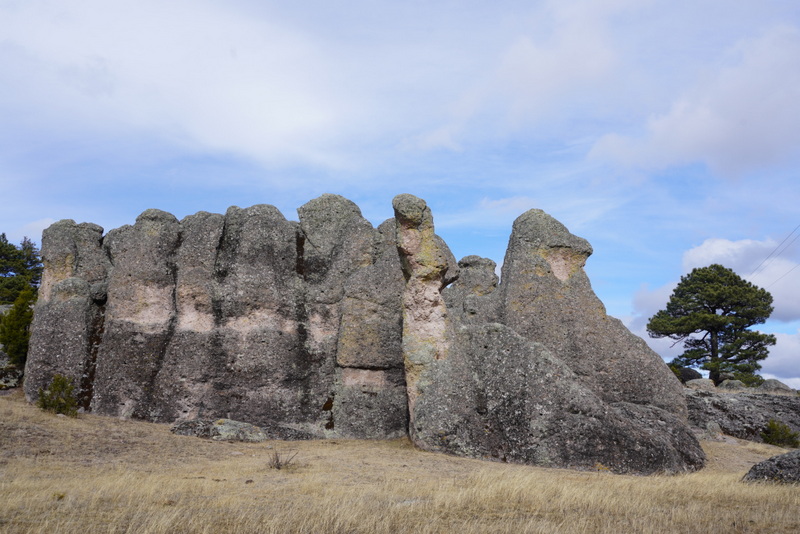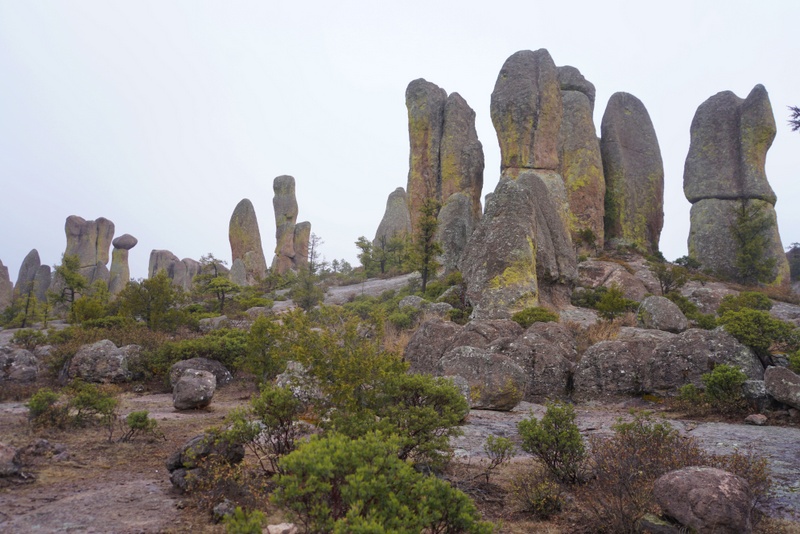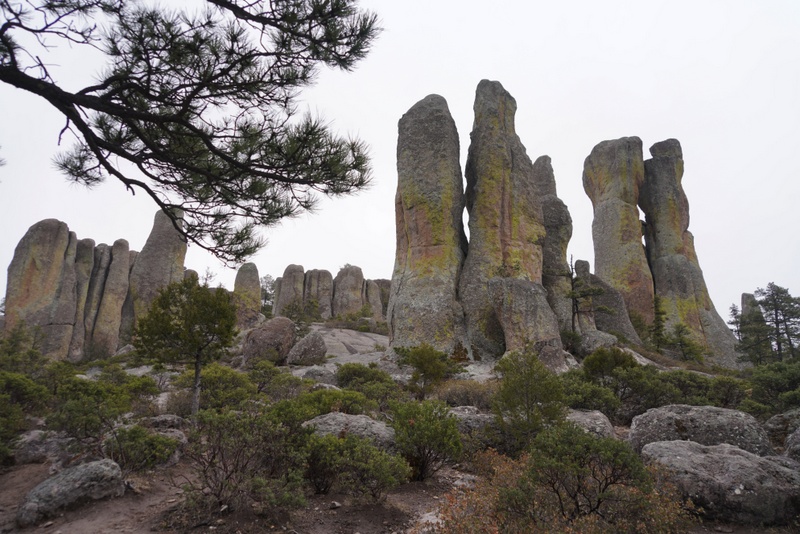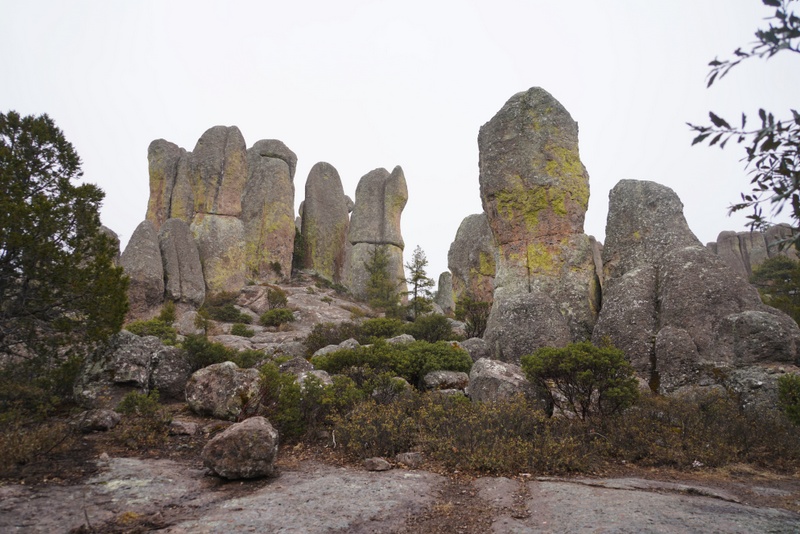March 6-11 Oaxaca, Chihuahua, Cases Grandes, Creel & Batopilas
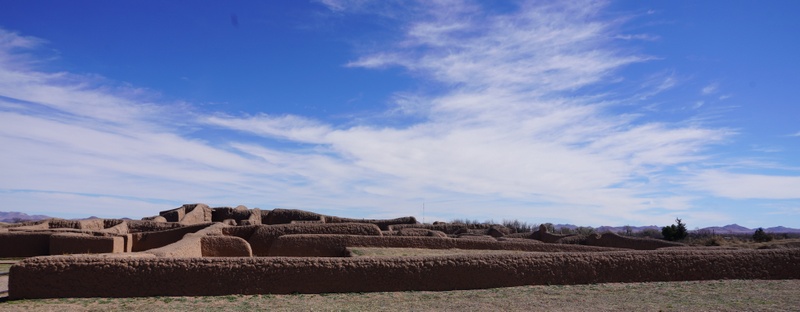
February 6 Thursday: Paquime, Casas Grandes
Mogollon culture is an archaeological culture of Native American people from Southern New Mexico and Arizona, Northern Sonora and Chihuahua and Western Texas. This culture flourished from the archaic period c. 200 AD to either 1450 or 1540 AD, when the Spanish arrived. Casas Grandes, one of the largest and most complex and significant Mogollon cultural sites in the northern Mexico, is a World Heritage Site.

The complex is located about 240km northwest of Chihuahua city in a wide, fertile valley on the Cases Grandes River. The largest identified settlement began after 1130 AD in what is known today as Paquimé or Cases Grandes. The settlement relied on irrigation to support its agriculture.
The settlement began as a group of 20 or more house clusters, each with a plaza and enclosing wall. These single-story adobe dwellings shared a common water system. Evidence shows that Paquimé had a complex water control system that included underground drain systems, reservoirs, channels for water to get to the homes and a sewage system.
After being burnt down about 1340 AD, the place was rebuilt with multi-story apartment buildings. It consisted about 2,000 adjoining rooms built of adobe, i-shaped Mesoamerican ballcourts, stone-faced platforms, effigy mounds and a market area. About 350 other and smaller settlements sites have been found in the Cases Grandes area.
The estimated population in the small area directly controlled by Cases Grandes may be about 2,500 with another 10,000 people living within the area under its control (about 30km from the city). The community was abandoned approximately 1450 CE.
I had booked a tour to Paquimé online with Justbookexcursion.com for USD174 (over 3100 MXN). I was told to arrive at a meeting point in the old town before 8 am. I was freezing when I got up after a five-hour sleep. I had to walk with my heavy suitcase for over 10 minutes to the meeting point. I was cold and my hands were frozen. I should have insisted to be picked up from my hotel.
I was met by a nice young guide, Jarez whose family comes from Cases Grandes. His father was taking a ride home to attend to some chores. I later discover I had a good deal as this tour would normally run with a minimum of two persons (2369 MXN pp) or three persons (1970 MXN pp).
It was a long drive. As it had snowed during the night, the scenery along the road was wild but pretty. It was around 11:30 am when we arrived at the archaeological site.

Jared showed me around the expansive archaeological site. We were alone. From the boardwalk, I could see the ruins including the walls, the plazas, shops and dwellings, drainage and wells.
It is interesting to see places where turkeys and macaws (for their feathers) had been kept.
I spent half an hour in the museum which though small is nicely arranged with good interpretations in English.
Jared then took me to see Colonia Juarez, Mormon’s first community set up in 1885. Jared has studied in the academy here. He showed me the sacred temple built in 1895 (the world’s smallest Mormon temple), located at the top of the hill.
I was glad to meet his mother-in-law Elda who is living in a house built in 1903 and her elderly mother Nelda. They speak English and basically continue their American way of life. I learnt that about 20 % of the population of Cases Grandes are Mormon followers.
We had taco for lunch in a nice local restaurant. It was so nice that I ordered the second. We began our long drive after lunch. The return journey was a bit boring. Jarez dropped me off at Hampton Inn Hotel around 6 pm. At the drive way, we saw Kylie arriving in a taxi. Great timing!
Kylie was exhausted after her long flight to Chihuahua via Tokyo and Mexico City. As plenty of food was offered during the happy hours, we did not bother to go out to eat. Both of us were tired and went to bed early.
February 7 Friday: Chichuahua
Kylie was desperate for a good sleep. But she had jetlag and had hardly slept. We took things easy and had a relaxing day. We began with a big free breakfast in the hotel.
At 9 am, we had a free transfer to the El Rejon Park for a stroll. There is plenty of birds and waterfowls.

We had a free shuttle to the Old Town at 12:30 pm. Though we were not hungry, we fancied some nice good. I read a lot about La Casona, a top restaurant in town and decided to treat ourselves. It was the best decision of the day! Kylie has a small appetite and we ordered a starter, a 14-oz rib eye steak and a goat cheese cake to share. The building is grand and the service is excellent. The lunch cost us less than 1200 MXN. Excellent value!
The state of Chihuahua is the largest state in Mexico with an area of 247,460 km2 and a population of about 3.5 million (2015). The city of Chihuahua founded by the Spanish in October 1709, is the state capital with a population of a million. The city is modern and well – developed and the predominant activity is industry.
We spent a leisure afternoon in the old town. Our exploration began at the Plaza de Armas. We then went into the Cathedral.
We walked from one end of the town to the other and were impressed by the grand colonial buildings such as the Palacio de Gobierno and Palacio Municipal. It was a pity that we could not the old St Francisco Church which would open at 6 pm for mass.
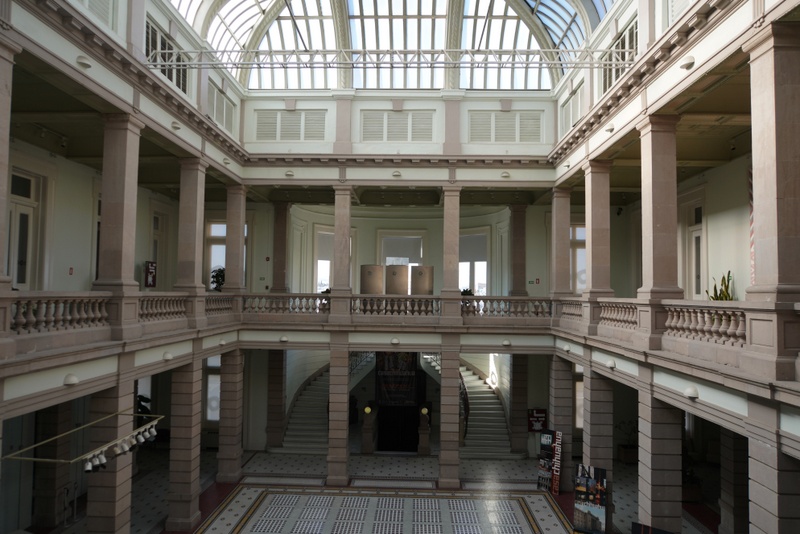
There are many museums and galleries in the city. We did not have much time and only visited the Casa Chihuahua Cultural Heritage Centre once known as the Federal Palace of Chihuahua. It also houses, in the basement, the jail cell of father Miguel Hidalgo y Costilla who was the first leader of the insurgency for independence from Spain. He was captured in 1811 and executed on July 30, 1811 nearby. He has been considered the Father of the Nation and his jail cell is a national shrine.
We took the shuttle back to the hotel after 6 pm. The area we stayed in a new area with international hotels and condos. We found a big supermarket where we happily spent an hour. Food was plentiful and looked fresh. We bought half a roast chicken for 55MXN.
February 8 Saturday: Chihuahua – Creel by bus
Copper Canyon
A group of six distinct canyons in the Sierra Madre Occidential in the southwestern part of the state of Chihuahua has become known as “Copper Canyon”. The walls of the canyon are a copper/green colour which is the origin of the name.
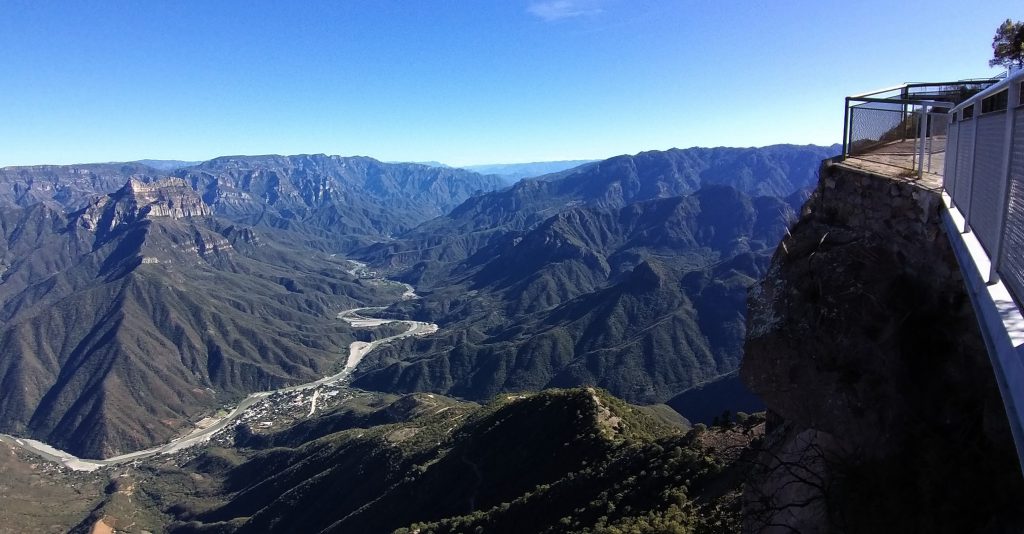
Urique Canyon & Urique by Rio Urique
The total area of the entire canyon region comprising the Urique Canyon, Sinforosa Canyon, Copper Canyon, Tararecua Canyon, Batopilas Canyon and Oteros Canyon, is about 64,750 km2. These canyons were formed by six rivers that drain the western side of Sierra Tarahumara. All six rivers merge into the Rio Fuerte and empty into the Gulf of California.
The traditional inhabitants of the canyon are the Tarahumara or Rarámuri. This indigenous population is estimated to be between 35,000 and 70,000. They often reside in the cooler mountainous regions during the hot summer and may migrate deeper into the canyon in the cooler winter months.
Mexico’s Copper Canyon is larger and deeper that USA’s Grand Canyon. But Grand Canyon is larger overall than any of the individual canyon of Copper Canyon. Due to impressive landscape and indigenous culture, Copper Canyon has gradually drawn international tourists’ attention.
The journey through the Copper Canyon by train has been regarded as one of the most scenic train rides in the world. The 653km-long Ferrocarril Chihuahua al Pacifico or El Chepe, runs along the Urique Canyon between Chihuahua and Los Mochis on the Gulf of California, crossing 37 bridges and through 86 tunnels. Construction of the railway which began in the late 19th century. The project was only completed in 1961. The train departing at 6 am from Chihuahua or Los Mochis with stops at Creel, Divisadero, Bahuichivo and El Fuerte, takes about 15 hours to reach its destination.
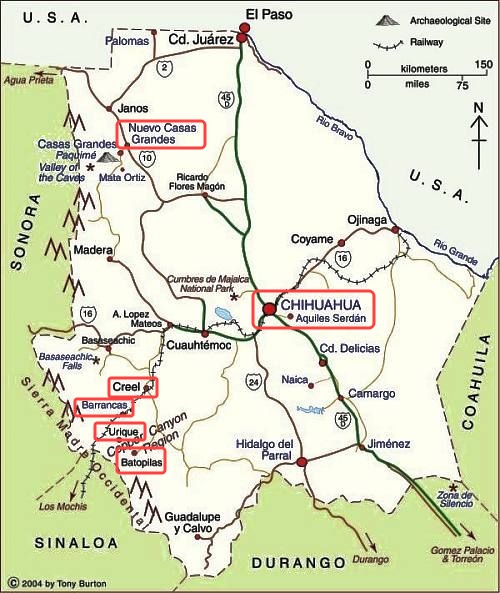
Places visited marked in red
Trip Plan – After some research, Kylie and I decided to spend eight days on our journey from Chihuahua to Los Mochis and to visit Creel, Batopilas, Divisadero, Cerocahui, Urique and El Fuerte. We booked a 3-day tour to Batopilas (US$327 pp) with Justbookexcursion.com before departure and planned to take the train or the bus whichever would be more convenient.
Today, we began our journey. As El Chepe to Creel would depart at 6 am, we preferred to take the bus at 10:20 am (267 MXN pp). The scenery only became more interesting when we approached Creel. We got off the bus at 2:45 pm. Our hotel, La Troje de Adobe is two blocks away. But as we had heavy suitcases, we asked the hotel to pick us up!

Located some 175 km from the city of Chihuahua at an elevation of 2340m, Creel marks the highest point on the railroad track. It has become a central point for commerce and tourism of Copper Canyon. Though Creel is the biggest town in the canyon area, it still retains a rustic frontier town feel.
We watched a modern tourist El Chepe train pulling into the station (A first class ticket on this train from Creel to Los Mochis is about USD200). We wandered into a small museum near the station. As only one section with some old photos was open, the museum waived the entrance fee.
It was very windy and cold. After a short stroll along the main street which is lined with souvenir shops and restaurants, we dived into a restaurant and had dinner. We had nothing since breakfast! The food was so-so. We went to bed early. But the room was cold as soon as the gas heater was off.
February 9-11: 3-day Tour to Batopilas
Day 1 Sunday
Batopilas (at an elevation of 600m) islocated 150 km from Creel at the bottom of the Batopilas Canyon on the Batopilas River. First established by the Spanish around 1632 AD to mine silver, it became a prosperous mining town with a population of 10,000. When the silver deposit was gone, the town dwindled. Today, it has about 2,000 inhabitants.

Our driver-guide Camilo arrived at our hotel at 8 am. I was shocked to find out that he was planning to take us on a day trip. I explained that we had booked and paid for a three-day trip. We spent the next half an hour trying to sort out the problem. I contacted Karl of Justbookexcursions while Camilo contacted his company in Creel. Apparently, the Mexican agent had misinformed the service provider in Creel. In any case, Camilo’s company asked him to stay with us. We were delighted the problem was satisfactorily resolved.
We had a scenic but challenging drive. The winding road is steep and dangerous with many falling rocks and boulders from landslides. Some of the slopes look threatening and dangerous. Anyway, Camilo is a great guy, patient, polite, humorous and an excellent driver. He has also taught me many useful Spanish words during the 4-hour drive.
We stopped at the La Bufa lookout point which offered the best view of the day. We saw Batopilas River throwing through the canyon and the Urique Canyon at the far end.

After checking in Hotel del Minas, Camilo took us to Carolina, the best restaurant in town. We had an excellent river trout cooked in tin foil (160 MXN) and beef with beans and rice (120 MXN). A wholesome and delicious lunch!
I find a ‘yesterday’ and enchanting feel in Batopilas. There are many grand elegant buildings, two beautiful and leafy plazas and a pricy and fanciful hotel (Riverside Hotel owned by an American).
Camilo took us to a local pub where I bought him a beer. We decided to return to Carolina and have trout for dinner. This time we had the fish cooked in Mexican sauce. Light and delicious! We had a comfortable and warm room and slept well.
Day 2 Monday: Satevó
We had breakfast in another local eatery nearby. Food was prepared after we had placed our order. Everything was fresh, nice and hot.
In the morning, Camilo drove us to see the Satevó Mission. The scenery with steep canyon walls along the river is magnificent.

Built by the Jesuits between 1760 and 1764, the church is unique due to its isolation and has been called the “Lost Mission”. After the expulsion of the Society of Jesuits in 1767, the mission was taken over by the town of Batopilas and was largely neglected till 1974 when the cathedral was transferred to Franciscans. The building has since been restored.
In the afternoon, we visited the town museum with some interesting old photos and exhibits relating to its mining past.
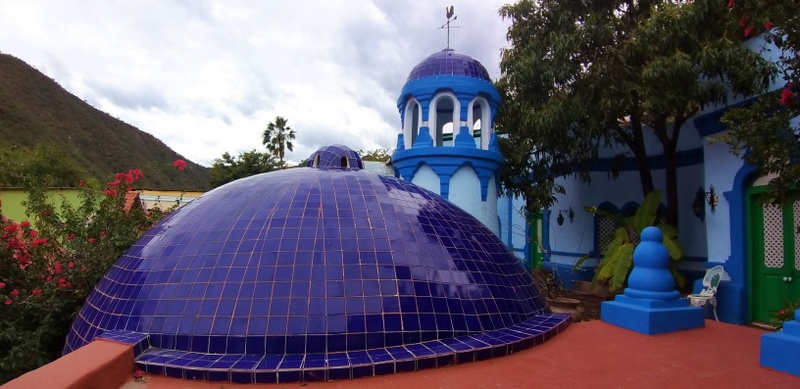
Alberto, the carer of both the Riverside Hotel and the Minas Hotel, took us on a guided tour of the Riverside Hotel. Being a boutique hotel, its selling point is its architecture and design. Each room is named after a lady. I like the room which is decorated with photos of the late Elisabeth Taylor (1932-2011).
Our last stop was the ruins of Hacienda San Miguel. Its owner wasAlexander Shephard, the America who relocate to Batopilas in 1880 to run his mining business.
Day 3 Tuesday: Creel
We set off early at 7 am on a grey cloudy day. We stopped at La Bufa again. The scenery had changed completely looking like a black-and-white photo. The scenery reminded me of the Chinese ink painting.
At our request, Camilo took us to the Cusárare Waterfall located some 25 km from Creel. We had to walk for 30 minutes to reach the waterfall. As it had been raining recently, the waterfall that is about 30m high looked impressive.
Camilo was in a rush. On the way back to Creel, he told us that he had to pick up three passengers in Creel after 1 pm and drive them to Chihuahua. We did not mind to return to Creel by early afternoon so that we could take a tour.
Things worked out well. Camilo introduced us to a Rarámuri guide. The only problem was that he did not speak English. We began our tour shortly after 2 pm.
First, he took us to visit a Rarámuri family living in a cave. We met an elderly lady and her daughter who were having their lunch. Another lady was cooking by the stove while two young girls and a baby girl were curling up in the bed.
There was not much inside the cave: two beds, cooking utensils, a table and chairs. I doubt whether they care much about cleanliness and tidiness.
Then we had a brief stop at Lake Arareko.
Our guide then drove us to the area inhabited by the Rarámuri ethnic group. These people are mainly engaged in agriculture.
For the next hour and a half, we visited Creel’s main attractions namely the San Ignacio Mission built by the Jesuits in the 18th century, Valley of Monks (a group of intriguing rock formation), Valley of the Frogs and Valley of the Mushrooms.

It was a pity that the weather was poor. It was wet and we had to walk most carefully. Our tour ended around 5 pm.
We were hungry. I had steak for dinner: it was good. Tonight, we stayed in another room which was smaller but much warmer. The bed was more comfortable too. As a result, both of us had a decent sleep.


